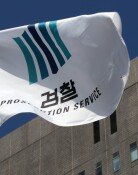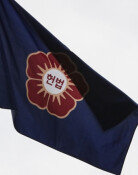Study Shows Older Koreans Save More
Study Shows Older Koreans Save More
Posted December. 02, 2005 07:02,
Koreans become more frugal in their 50s compared to when they were younger in order to prepare for their lives after retirement and their childrens weddings, according to the LG Economic Institute.
In its report titled: The heightened savings rate of people in their 50s and older: motivation and impact, the institute tracked the savings rate of households whose head of the family was 25-29 years old in 1969 by referring to data from the National Statistics Office (NSO).
Their average savings rate was 9.2 percent in their late 20s, then went up to 13 percent in their early 30s and 25.7 percent in their late 30s. It dropped to 21.6 percent in the early 40s and again to 18.9 percent in the late 40s. In the 50s, the savings rate recovered 20 percent level. The average rate was 28.1 percent in the early 50s, and 22.9 percent in the late 50s. After 60 years, the rate soared to 32.9 percent.
The higher rate of savings among older people holds true not only for the chronological trace of particular households, but for average savings rate by age group.
According to the NSO, the average savings rate by age of family heads was 29.2 percent for those in their late 50s, and 32.9 percent for those 60 years olds and older, which is higher than the 26.4 percent for people 25-29 years old, 28 percent for those 30-34, and 26.0 percent for those 35-39.
The N-shaped curve of the savings rate by age group in Korea is far from lifetime savings theory, which endorses efficient spending of assets in older age, or the reversed-U shaped-curve seen in the U.S.
According to the report, people older than 50 want to save more because they want to finance their childrens weddings and to prepare for the time after retirement due to the poor social welfare system. Their strong will to leave an inheritance to their children is another powerful motivation.
The increasing savings rate in older age groups can lead to diminished consumption and chronically sluggish domestic consumption, said the report. It advised if the trend picks up, businesses targeting older people should lower their growth expectations.
The report analyzed that the relatively lower savings rate in ones 30s and 40s resulted from spending hikes for marriage and child-raising.
Hyo-Lim Son aryssong@donga.com
Headline News
- Med professors announce intention to leave hospitals starting Thursday
- Bridge honoring Sgt. Moon Jae-sik unveiled in Pennsylvania
- Chief of Staff Chung tells presidential secretaries to stay away from politics
- US FTC bans noncompete agreements
- N. Korea launches cyberattacks on S. Korea's defense companies







